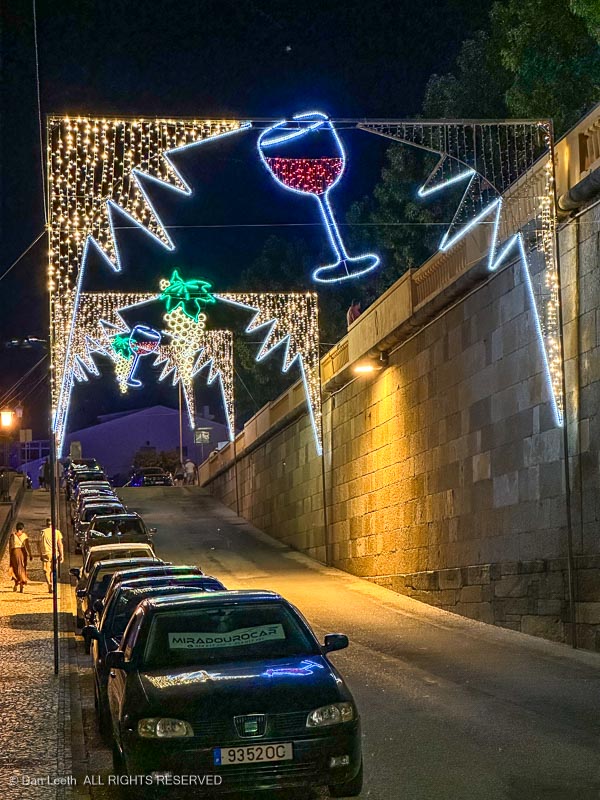In the wee hours of morning (7:45 a.m.), the boat left the docks and headed upstream.

The river valley narrowed, the stream flowing between steeply forested hillsides and outcrops of naked rock. It looks to be a perfect place to place a dam…
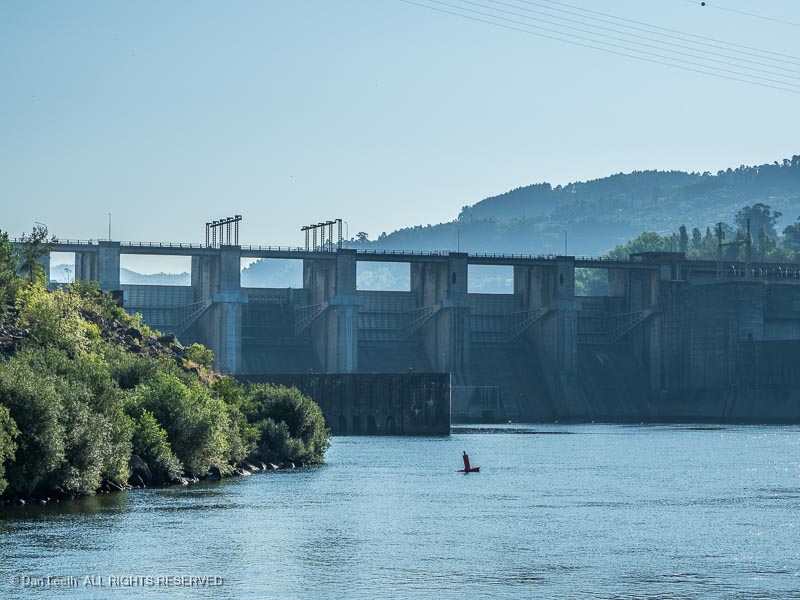
…which is exactly what the Portuguese did. This is the Carrapatelo Dam…

…where we slowly enter the deepest lock in all of Europe.
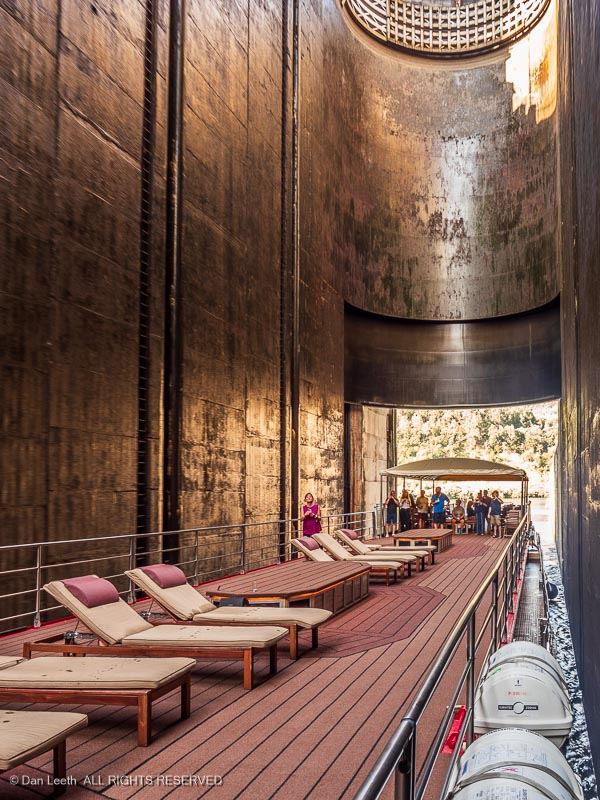
Confined in a narrow, concrete canyon that’s only slightly wider and longer than the boat might be a challenge for anyone suffering from claustrophobia.
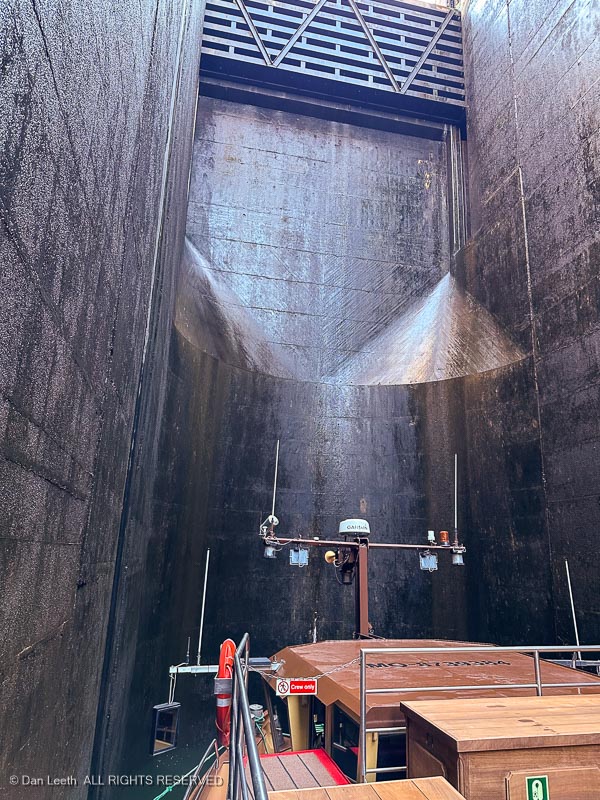
Doors close, water enters and the boat slowly rises 115 feet, about 2/3 the height of Niagara Falls.
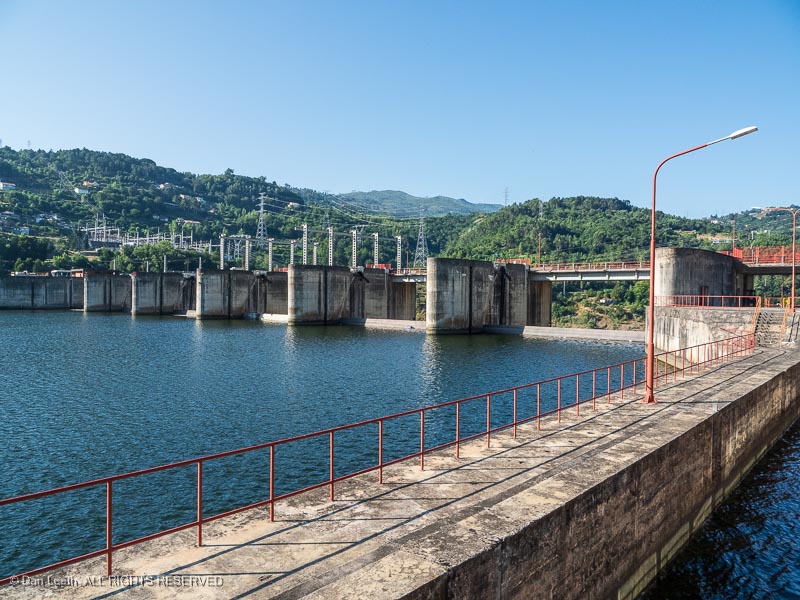
Water levels in the lock and upstream equal, doors open and we sail out, now upstream of this big concrete cork blocking the river.
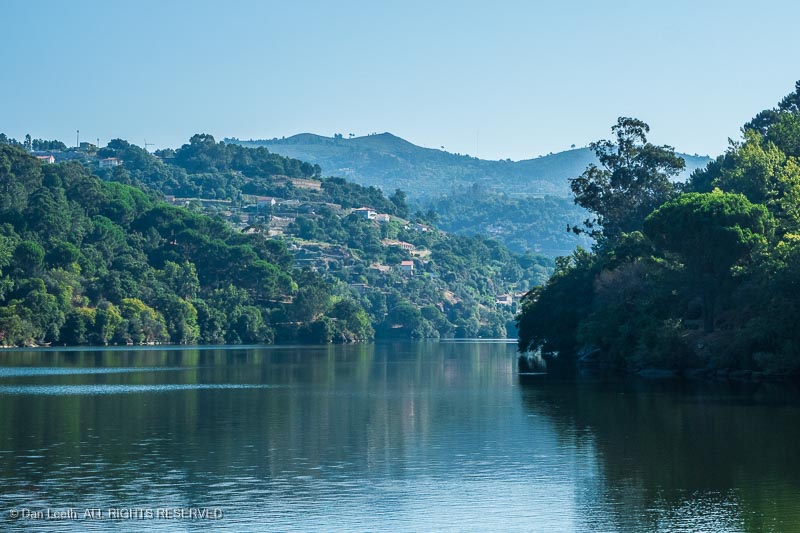
We continue upriver, gazing at greenery and the occasional riverside village.

One of the fun things on a European river cruise is sailing under low bridges. We made it under this one with a few feet to spare.
We docked in the town of Regua…
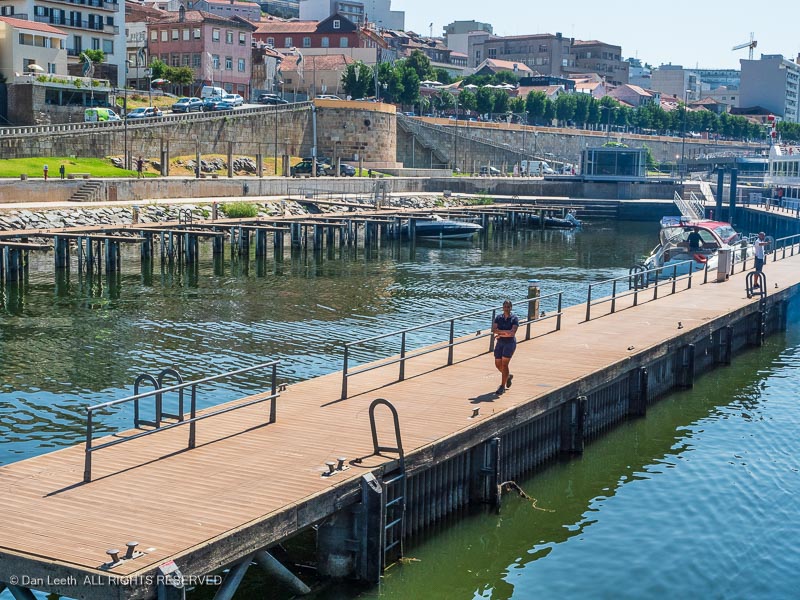
…where our bus (same driver) and Ana, same tour guide awaited.

We were soon off to the town of Lamego where we visited (remember, this is Europe) a church. This was the Our Lady of Remedies Church…
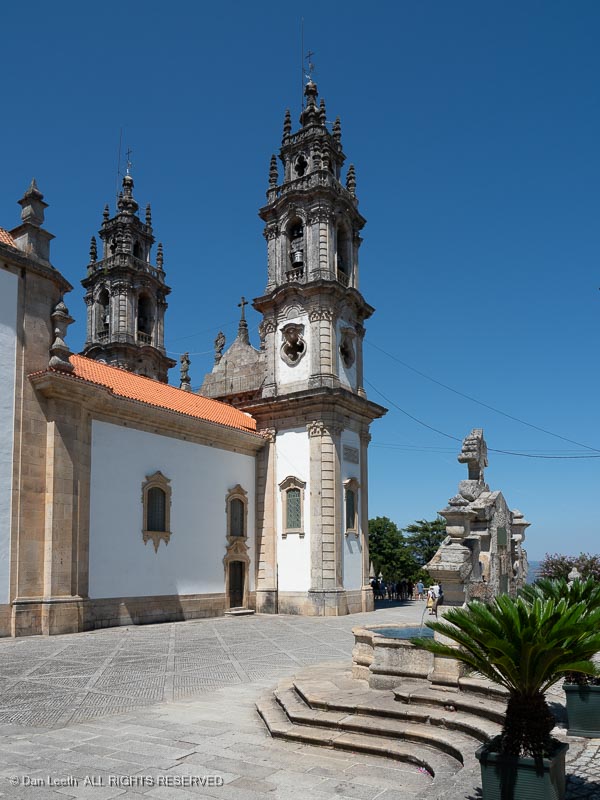
…which sits high above town.
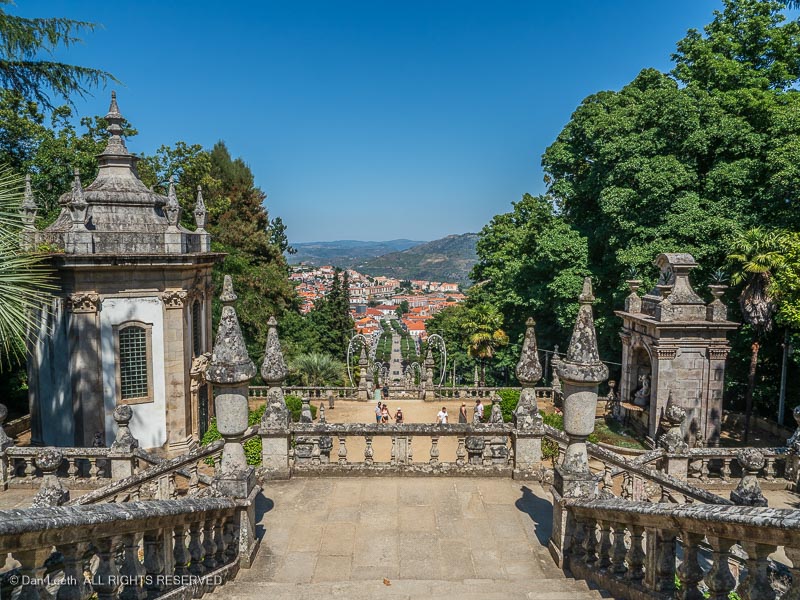
Outside, its staircases sported a tile mural…
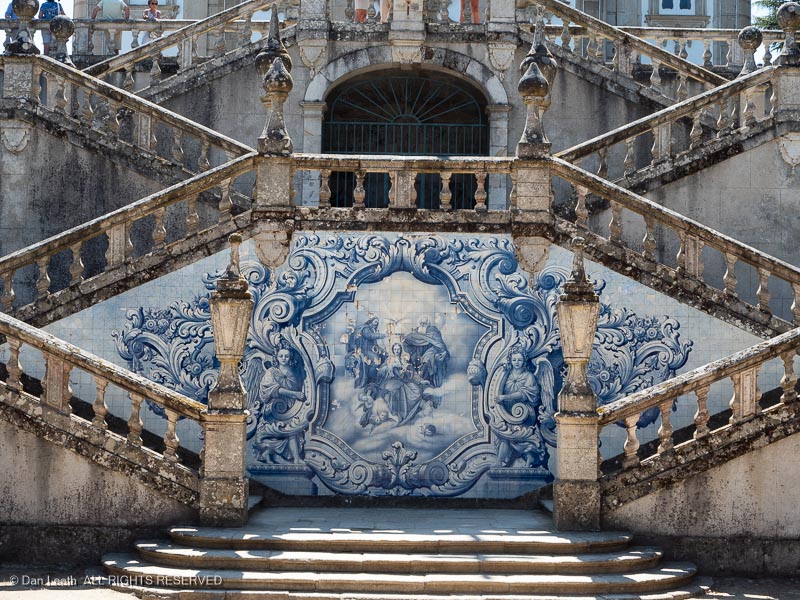
…and it’s interior was as ornate as one expects to find in a European house of worship.

Back down in town, we stopped by another church, this one the Cathedral of Our Lady of the Assumption.
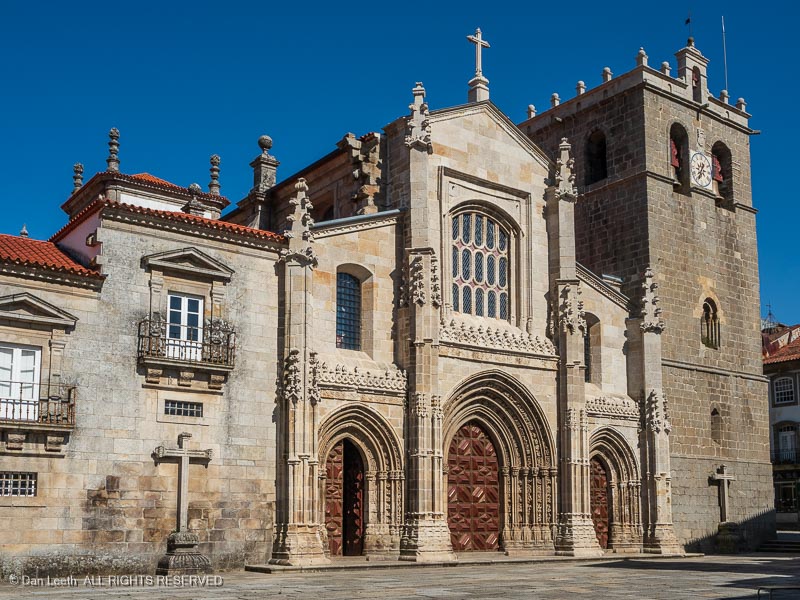
Lamego is known for its Raposeira sparkling wine along with Mateus rose (more on that pink stuff later).
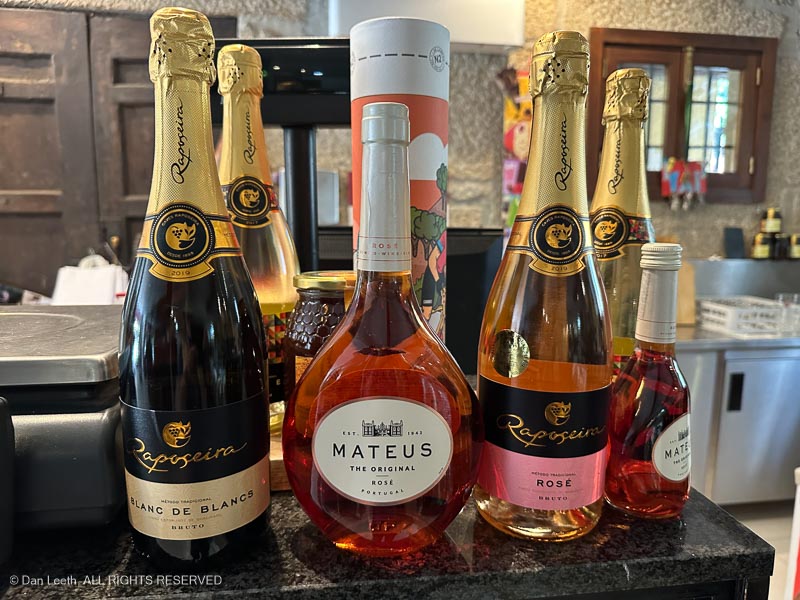
We sampled some on our tour…
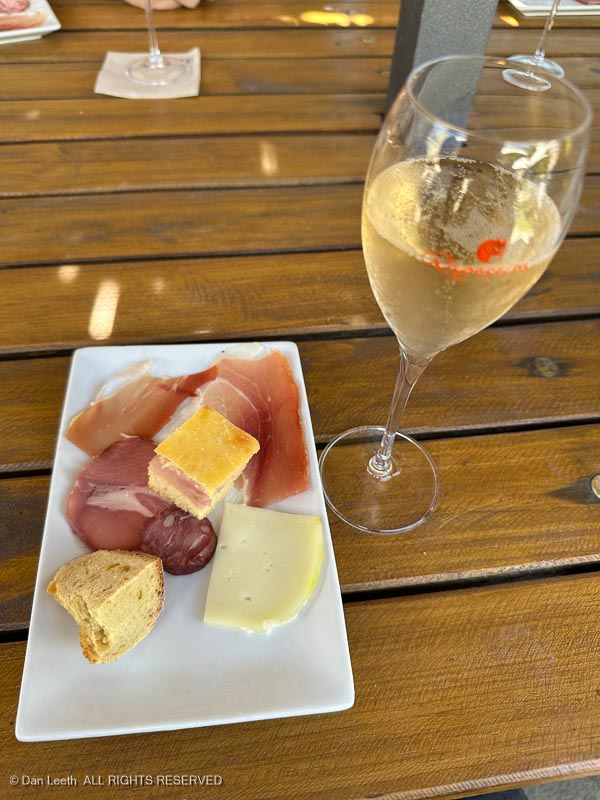
…then joined fellow passengers at a streetside bar for more.
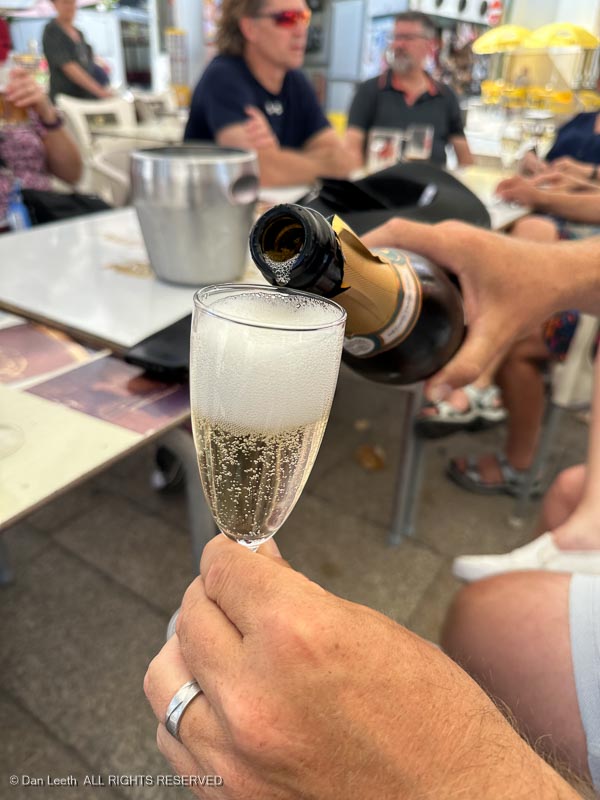
After returning to the boat for lunch, we set off on another bus tour. This one would take us to Quinta da Pacheca, the winery our lasagna waiter had recommended back in Porto.
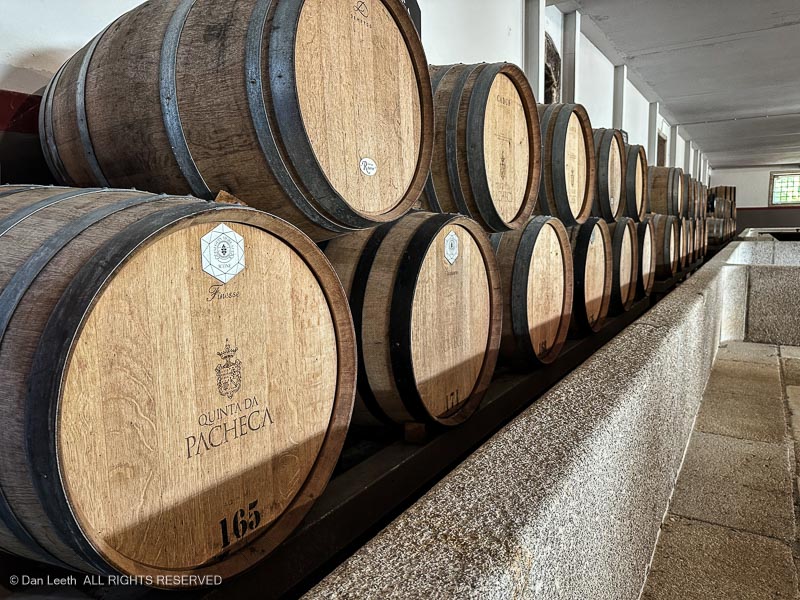
Standing in a large tub enclosure, our winery guide told us about how they process their grapes by hand, or in this case by foot.
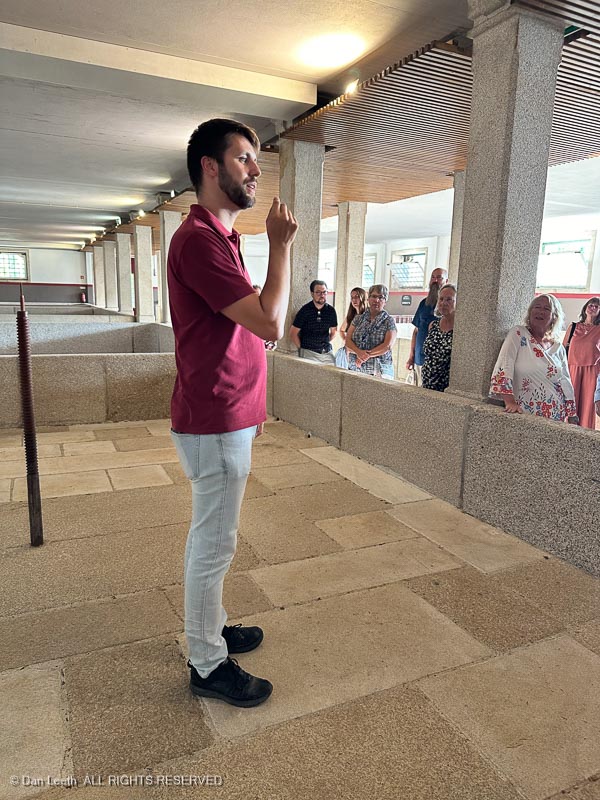
The grapes, he explains, are loaded into this stone-walled tub. Then, a group of human grape stompers then circle around it, crushing the grapes with their bare feet. This keeps the seeds and stems from being crushed into the juice.
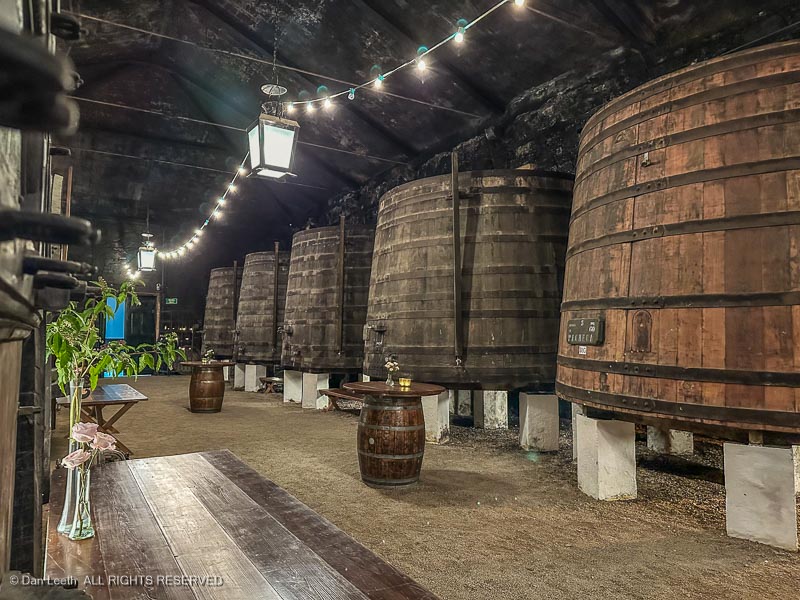
I immediately walked up to Jordan, president of Bookcliff Vineyards (our trip sponsor), and volunteered to be a grape stomper if Bookcliff ever wanted to get rid of their mechanical crushers.
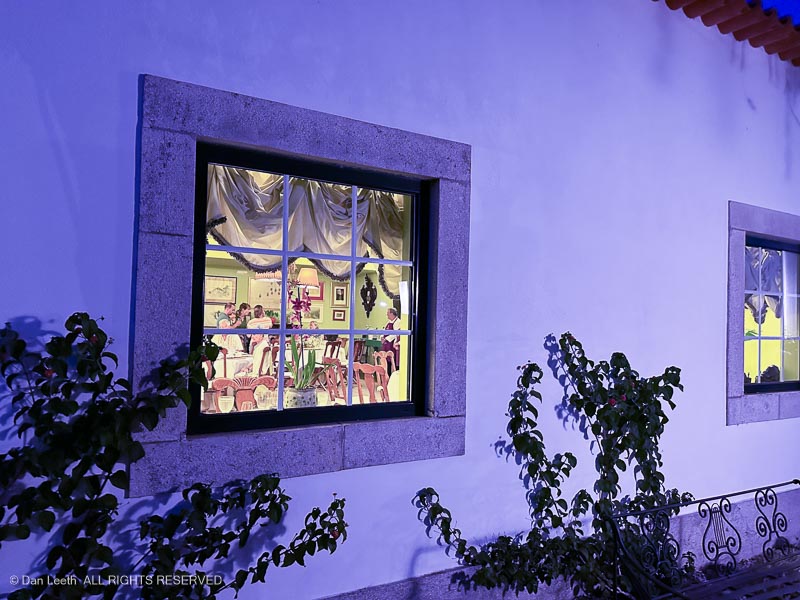
We enjoyed dinner that night at the winery, with plenty of that foot-crushed wine on tap.
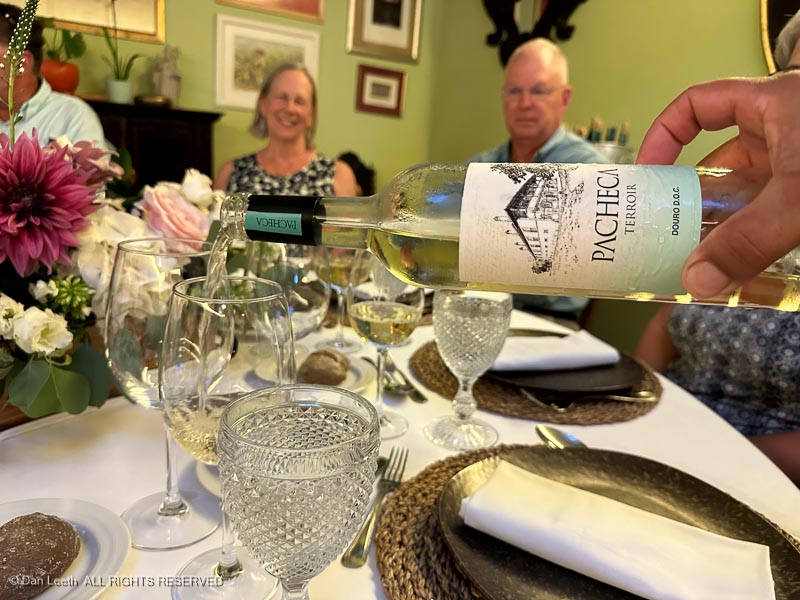
After begrudgingly agreeing to pose for a selfie with the wife…

…it was back into the bus for the return to Regua, where overhead lights near the docks provided a fitting end to Day #2 of our wine cruise up the Douro River.
